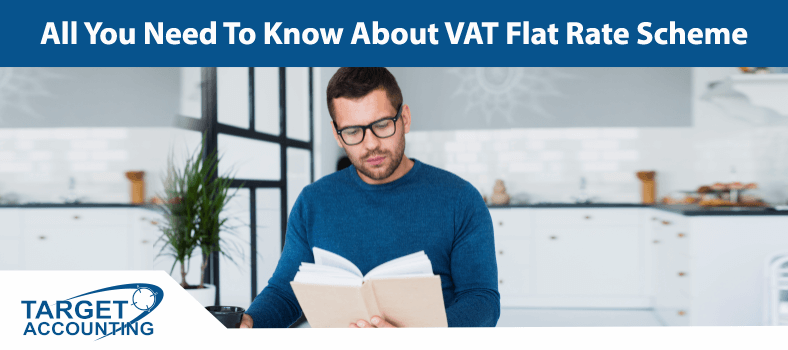VAT Notice 733 contains the information on the Flat Rate VAT Scheme. This notice has been designed to explain all about the Flat Rate Scheme, how one can apply to join it, and who can use it. Several standard VAT rules also apply to and are a part of the Flat Rate Scheme.
What Is The Flat Rate Scheme (FRS)?
FRS scheme has been created to simplify all your records of purchases and sales. Using this scheme, you can use a fixed flat rate percentage and apply it to your gross turnover. As a result, you can calculate the due VAT. In this regard, it is important to note that the fixed-rate percentage varies according to the business type.
The Flat Rate Scheme comes with a number of benefits. In addition to enjoying simplified record keeping, you will not have to maintain any elaborate record of invoices and sales. In addition to that, this scheme assists in managing the overall cash flow and the fixed-rate percentages are also less than the standard rate.
That said, not all kinds of businesses might benefit from the Flat Rate Scheme. For instance, if your customers are registered for VAT, you will be required to calculate VAT as well as issue invoices in the standard way. The scheme is a bit more complex for businesses that sell and buy goods outside the country. It is also noteworthy that you might have to pay more VAT on this scheme than on normal accounting because of the average flat rates.
In case you use this scheme, you must know that you won’t recover VAT or input tax on acquisitions or imports because the calculation of flat rates represents the VAT that you must pay to HMRC. Simply put, flat rates include an allowance where input tax is concerned. Furthermore, special rules apply when an individual purchases high-value capital goods. It is possible to claim the VAT on all these purchases. Read Section 15 to know how to do that.
The Flat Rate Scheme is meant for businesses that have a turnover of £150,000 or less in a financial year (excluding VAT). In the same vein, several rules have been put in place to ensure that this scheme is not abused. The good thing about the Flat Rate Scheme is that using this method; you can calculate the total VAT you owe to HMRC. Therefore, this scheme is not appropriate in cases where you receive repayments regularly from HMRC. You can join the scheme by applying for it by email, post or phone.
Conditions and Eligibility for Flat Rate Scheme
The Flat Rate Scheme is essentially meant for small businesses. An individual can easily apply for this scheme if he/she can register for VAT, a person’s business is not linked to another, and a business’s taxable turnover is £150,000 or less excluding VAT. Calculating the taxable turnover of your business is easy. You must exclude all anticipated sales but include the following while calculating the taxable turnover:
Any investment gold sales covered by Section 55 of the VAT Act.
Your total turnover from selling second-hand goods outside the Margin Scheme.
The value of all your reduced rated, standard rated and zero rated supplies.
Make sure that you remove any VAT when calculating the taxable turnover.
Limited Cost Businesses
The concept of Limited Cost Trader came into effect from 1st April, 2017. A business is classed as limited cost business if the amount it spends on relevant goods including VAT is either:
less than 2% of their VAT flat rate turnover or
greater than 2% of their VAT flat rate turnover but less than £1,000 per year.
If you’re running a limited cost business, according to the norms, you must use the 16.5% flat rate and cannot use the rate prescribed to your industry.
Businesses can use a simple and straightforward calculator to understand whether or not they are a limited cost business. You will need some basic information before you begin. Remember to use the information from the most recent period of the VAT return. In case you submit quarterly returns, it will mean a 3-month time period. On the contrary, in case you submit annual returns, it will cover an entire year. You will need your relevant turnover and the cost of goods that have been used for your business exclusively.
More details on how to use and apply the Flat Rate Scheme can be found here.
Get In Touch With Target Accounting!
With the ongoing COVID-19 crisis, you and your business can use all the financial advice and help it can get. There are uncertain times ahead, and this makes it all the more vital to stay on top of your game and make sure all your business operations are streamlined as much as possible. Target Accounting is a leading accountancy firm in the UK that can help you understand your taxes and liabilities perfectly.


